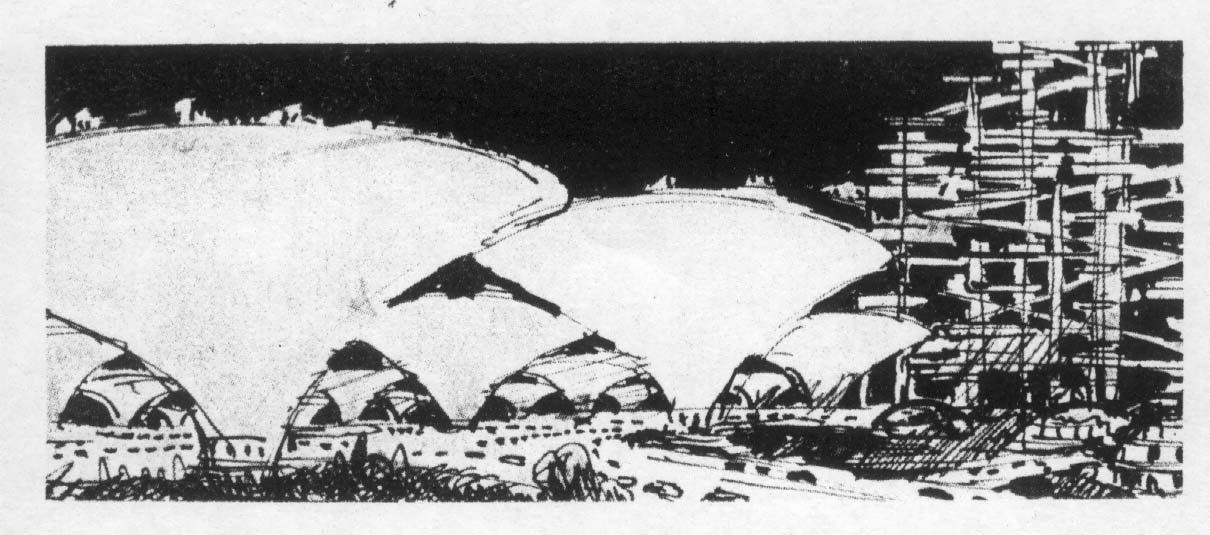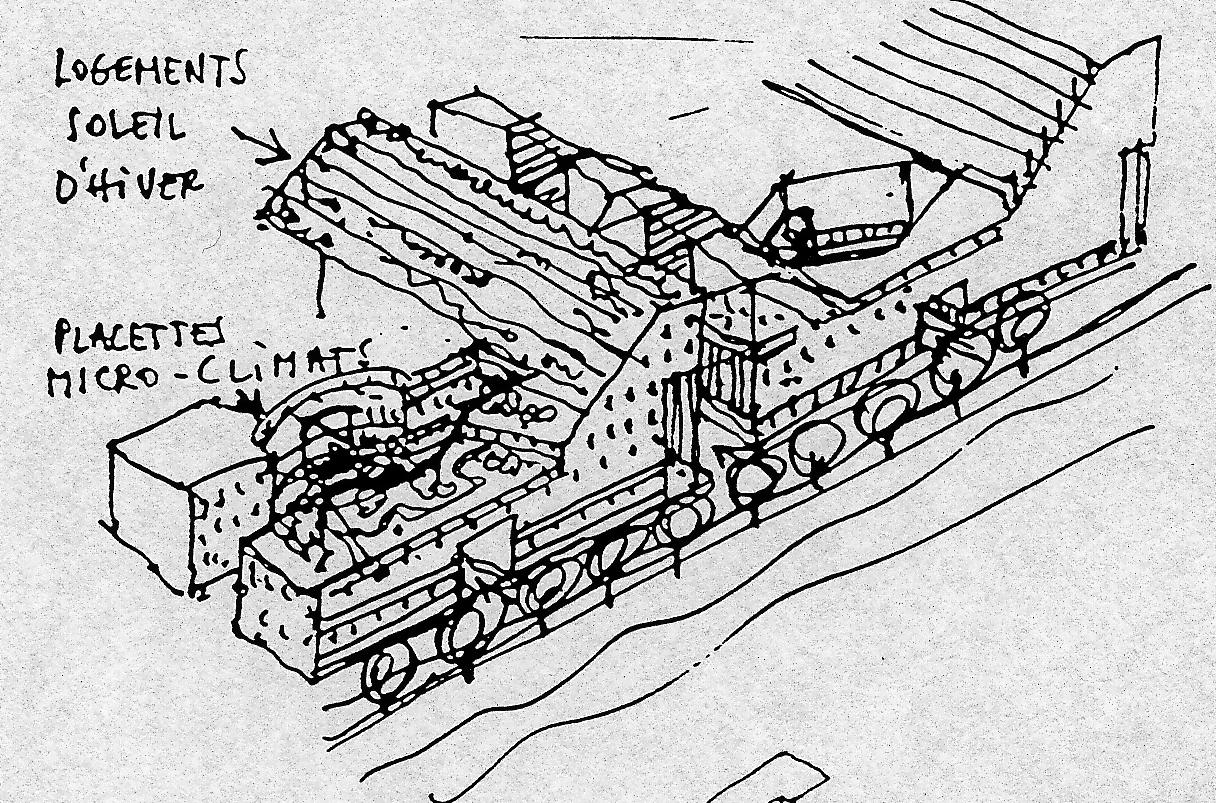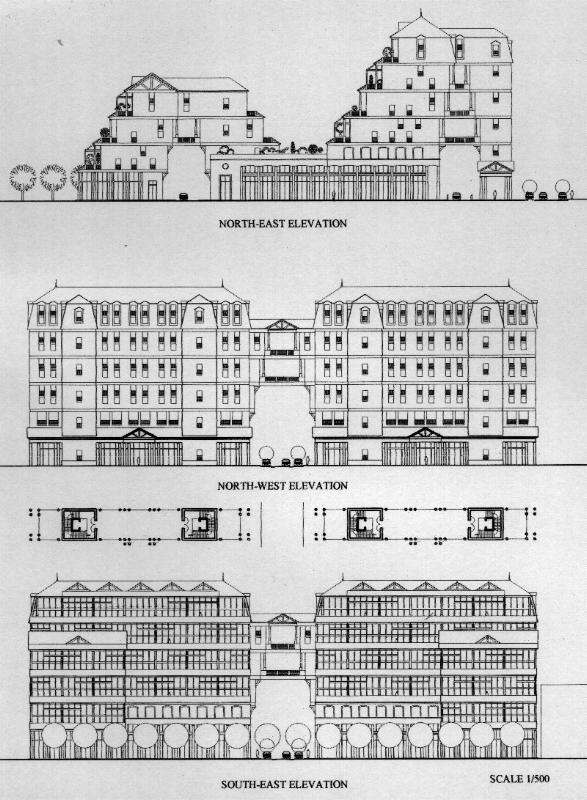|
The
"Cité du Futur" has often been outlined by
designers like Kurokawa, Jonas, Cook or
Quarmby with radically futuristic and improbable forms, floating in the
air or on the water, like sets of gigantic umbrellas or myriads of pods
hanging from endless poles, where people would seem to be expected to
live like insects rather than like human beings.

Intra-cities by Walter Jonas
Instead,
the "City of tomorrow"
will hopefully just be another development of the Traditional
City, still a meeting place allowing encounters and cultural and
economic exchanges, still a place where people will enjoy walking, just
like they enjoyed walking in Pompeii, 2,000 years ago.

Axonometry
for a sustainable city block in Seine-Rive-Gauche, Paris (sketch by JL Msika)
The
only difference will be that the "City of tomorrow"
will be designed so as to welcome a world population which has
increased tremendously, and at the same time, protect the environment
in the following manner:
I. By
the appropriate use of solar energy and passive solar architecture on a
large urban scale; and
II.
By a dense mixed-use urban design
which will free the city dwellers from daily reliance on private cars.

South-east elevation is fully glazed while north-west elevation
retains only small windows for cross ventilation. (JL Msika)
The Sustainable City Project proposal involves only existing and proven
building technology. No "spacecars" levitating around, no "floating city", etc..
Present action is urgent in the face of global warming. The sustainable city is feasible today, it is possible and necessary.
|

